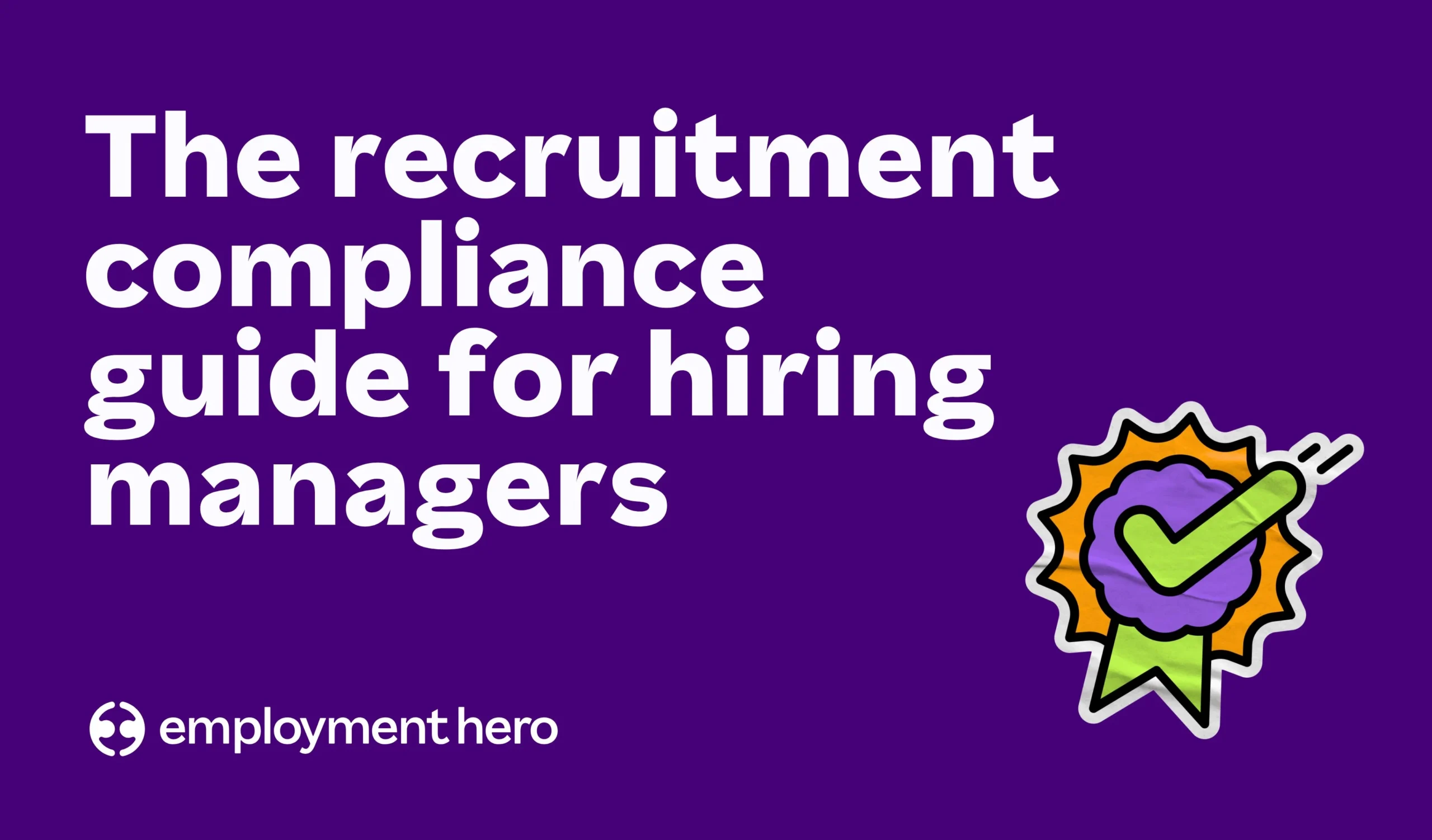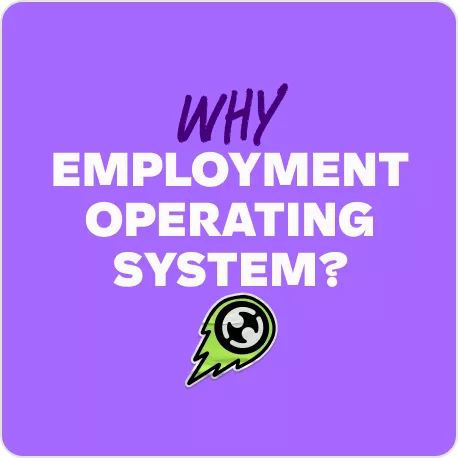Workplace Bullying and Harassment Policy Template
Published
Workplace Bullying and Harassment Policy Template
This free Australian Workplace Harassment and Bullying Policy will outline your organisation’s expectations around employee conduct, along with the roles and responsibilities of managers in the event workplace harassment does occur.
About this bullying and harassment policy template
The objectives of this policy are to, as far as reasonably practicable:
- identify what workplace harassment is
- identify what workplace harassment is not
- outlay standard of behaviour
- the role of managers and supervisors
- what to do if you experience workplace harassment
Download our template to implement your own anti-bullying and harassment policy today.
Workplace bullying and harassment in Australia
Unfortunately, bullying and harassment cases in Australian workplaces are all too common but are definitely not something that should be pushed to the side within any business.
This is why it is important for you to create a workplace bullying and harassment policy for your business and ensure everyone feels safe and happy at work.
According to Safe Work Australia, 9.4 per cent of Australian workers reported experiencing workplace bullying in the previous 6 months of 2014-15.
Accusations of bullying plague workplaces of all types: construction, media, politics, hospitality and hospitals. Some of which might come as a shock to some of you.
For further guidance on handling workplace bullying effectively, check out our guide on how to stamp out bullying in the workplace.
What is a workplace bullying and harassment policy?
A workplace bullying and harassment policy is a policy committed to providing a respectful workplace that is completely free of harassment and bullying behaviours.
Workplace bullying and harassment can be a huge risk to the health and safety of employees and can have lasting effects on their mental and physical health.
This is why every business has an obligation under the Work Health and Safety Act 2011 to ensure the health and safety of employees in the workplace. This act prohibits any person within a business from engaging in workplace discrimination of any description.
But what counts as bullying and harassment, and what doesn’t? Where do you draw the line?
What is bullying – and what isn’t?
The first step in creating a bullying and harassment policy is to determine and define what bullying is.
The Fair Work Australia website provides information about what does and doesn’t constitute bullying behaviour. Bullying also includes sexual harassment and workplace discrimination.
This is an important distinction to make for both employees and management when creating your bullying and harassment policy.
Bullying is repeated acts of unreasonable behaviour directed towards an individual or a group that poses a risk to health and safety.
Unreasonable behaviour includes:
- Victimising behaviour;
- Humiliating an individual or group;
- Displaying intimidating gestures or behaviour;
- Or threatening language or behaviour.
It’s also important to note that reasonable management action, such as delivering instructions or addressing performance issues, does not count as bullying. However, only if these actions are carried out with a fair and transparent process.
If management action is unreasonable, it may constitute bullying as well. An example of this is when managers are deliberately setting unreasonable timelines for projects or extending the working hours of employees with no valid operational reasons.
To manage grievances effectively within your organization, consider implementing a workplace grievance handling policy.
Read more: Tips to handle workplace conflicts
What bullying could cost you
We created a guide to stamp out bullying in the workplace, which outlines some of the effects of not having a bullying and harassment policy in place.
“Individuals who are being bullied may lose confidence in their abilities, suffer from increased anxiety, headaches, loss of sleep, and potentially depression.”
As shown in our white paper, it pays to take bullying seriously. The Productivity Commission estimates that bullying costs Australian organisations between $6 billion and $36 billion a year in lost productivity, increased absenteeism, poor morale, and time spent documenting, pursuing or defending claims.
A bullying and harassment workplace policy is a simple thing to put into place, yet it could cost you big bucks if not implemented correctly.
Handling bullying and harassment in the workplace
So, now you know what counts as bullying in the workplace and what it means for your business – how do you handle it?
Employers must be proactive when handling bullying and harassment in the workplace as part of their obligation to provide a safe work environment. Employers must provide an environment that’s free from risks to health and safety.
Failure to do this properly has serious consequences for the entire business.
To ensure a safe and healthy workplace, consider implementing a workplace health and safety (WHS) policy.
Read more: Guide to conflict management in the workplace
Workplace bullying case studies
Mary-Rose Robinson (Queensland Health)
Let’s take the case of Mary-Rose Robinson as a prime example. Mary-Rose was a registered nurse who worked for Queensland Health. She won $1.46 million in damages for negligence from her former employer after she suffered a psychological injury due to workplace bullying.
Mary-Rose Robinson said her former boss, Cape York Health Service district chief executive Susan Turner, repeatedly humiliated and undermined her until she was forced to leave and left her job back in 2011. This led to Mary-Rose medically retiring from nursing in 2014 for good.
This is a terrible case of workplace bullying, and it’s a case that highlights how workplace bullying and harassment can have potentially devastating effects in the workplace if there is no policy in place – for victims, perpetrators and organisations alike.
Kate Mathews (Winslow Constructors)
Another horrible example of a workplace that didn’t have a bullying and harassment policy in place is the story of Kate Mathews.
Kate was a road construction worker from Victoria who endured two years of sexual harassment and bullying from her colleagues at Winslow Constructors between 2008 and 2010.
She said when she brought the issue to her employer’s attention, management did nothing to address her co-worker’s toxic behaviour.
In 2015, the Victorian Supreme Court awarded Kate $1.36 million in damages. The judge acknowledged the unlikelihood of Kate ever working again due to the chronic and significant psychiatric injuries caused by the bullying.
These two examples of completely neglected workplace bullying and harassment policies in a workplace show that every organisation should have an official workplace bullying and harassment policy that clearly identifies in writing the expected behaviours and consequences for every employee if they do not comply with them.
Creating your own workplace discrimination and harassment policy
As you can see the issues with not having a proper bullying and harassment policy in place can be catastrophic. So, you want to make sure your business has one and that it’s water-tight while being easily understood from every corner of the office.
Safe Work Australia provides a basic guide outlining what should be included when creating a workplace bullying and harassment policy:
- a statement that the organisation is committed to preventing workplace bullying as part of providing a safe and healthy work environment;
- the definition of workplace bullying (as described in this guide);
- the standard of behaviour expected from workers and others in the workplace;
- a statement, where relevant that the policy extends to communications through email, text messaging and social media;
- the process for reporting and responding to incidents of unreasonable behaviour;
- the process for managing reports of workplace bullying, including vexatious reports, and
- the consequences of not complying with the policy.
To cover digital interactions and ensure appropriate online conduct, use our workplace social media policy template.
Putting it into practice
When implementing organisational policies, no matter how robust the policy is, it will only work if it’s being followed up on properly.
So, now you’ve created your policy, you need to make sure it’s been stuck to.
You need to ensure your workers have reviewed and acknowledged the policy and that you’ve provided appropriate training on identifying behaviour that is not acceptable. Without adequately enforcing your policy, it’s worthless when it comes to protecting your business and your employees.
Make sure you share the policy with all employees. You should raise awareness about bullying by discussing the issue in company newsletters, blogs and at in-house events. A great way to help share policies across the company effectively is by having a people management software in place.
Whenever you do receive complaints about bullying or harassment, be sure to investigate promptly and document accordingly as soon as possible.
In light of recent health concerns, it’s also crucial to have a Covid-19 workplace hygiene policy in place to ensure the safety of your employees.
Related Resources
-
 Read more: Employment Essentials: Performance Management for SME’s
Read more: Employment Essentials: Performance Management for SME’sEmployment Essentials: Performance Management for SME’s
Effective performance management is more than ticking a compliance box – it’s a critical driver of employee engagement, business productivity,…
-
 Read more: Recruitment compliance guide for hiring managers
Read more: Recruitment compliance guide for hiring managersRecruitment compliance guide for hiring managers
Learn how to manage compliance when finding talent and interviewing candidates in your business.
-
 Read more: Hiring issues holding you back? The business owner’s guide to competing for top talent
Read more: Hiring issues holding you back? The business owner’s guide to competing for top talentHiring issues holding you back? The business owner’s guide to competing for top talent
Published Hiring great people is one of the most powerful ways to grow your business – but it can also…










